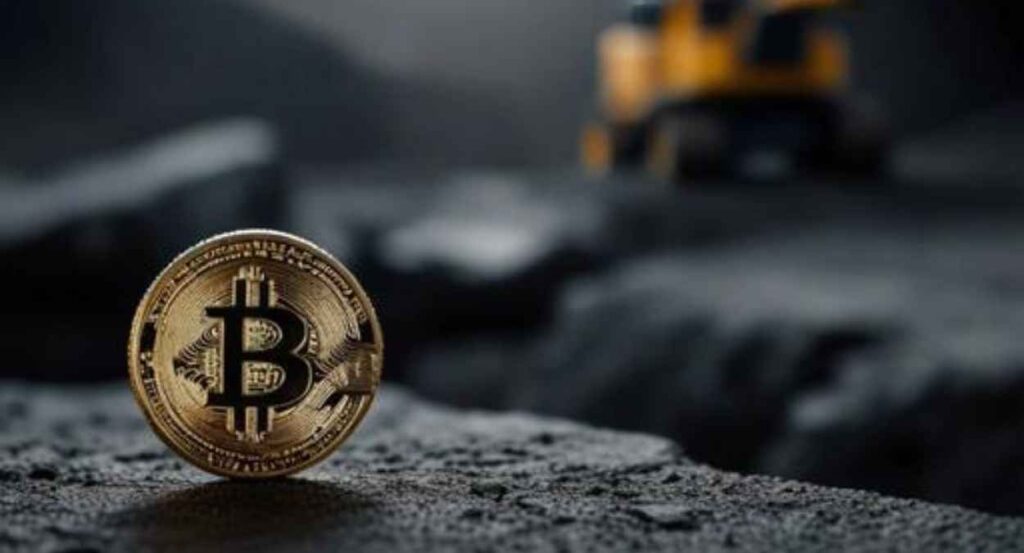
Bitcoin Halving and Its Impact on Miners
The bitcoin halving is a highly anticipated event that occurs roughly every four years. This systematic reduction in the mining reward aims to control the supply of bitcoins and maintain its deflationary nature. As we approach the next halving, set to occur between April 18 and April 21, 2024, the mining community is bracing for a significant impact on their operations and profitability.
Understanding the Bitcoin Halving
The bitcoin halving is a pre-programmed event that reduces the mining reward by 50%. In layman’s terms, miners who currently receive 6.25 bitcoins (BTC) for each block they mine will see their rewards halved to 3.125 BTC after the event. This controlled supply mechanism is a core feature of bitcoin’s design, ensuring its scarcity and long-term value.

The Impact on Miners’ Revenue
The halving event directly impacts the revenue streams of bitcoin miners. With reduced mining rewards, miners face a significant decrease in their income, which could potentially make their operations unprofitable. According to billionaire Mark Cuban, the halving will “make it harder for miners to get paid.”
However, the impact of the halving is not uniform across all miners. Those with access to low-cost energy sources and efficient mining rigs are better positioned to weather the storm. Riot Platforms, for instance, has focused on achieving a low cost of power, a strong balance sheet, and significant operational scale to prepare for the halving.

Diversification and Innovation: Survival Strategies for Miners
To mitigate the impact of reduced mining rewards, miners have been proactively diversifying their business models and adopting innovative strategies.
Embracing Artificial Intelligence (AI)
One notable trend is the integration of Artificial Intelligence (AI) into mining operations. Companies like Bitdeer, Hive Digital Technologies, and Core Scientific have ventured into AI services, leveraging their existing infrastructure and computing power. This diversification allows them to tap into the lucrative AI market and supplement their core mining revenues.

However, pivoting to AI is not without challenges. As Nic Carter of Castle Island Ventures points out, “The data center requirements are different, as are the data network needs.” Miners will need to invest in specialized infrastructure and acquire AI-specific expertise to make this transition successful.
Optimizing Power Sources and Efficiency
Another key strategy for miners is to focus on optimizing their power sources and improving operational efficiency. Stronghold Digital Mining’s CEO, Greg Beard, emphasizes the importance of owning low-cost power sources, stating, “Miners who own their low-cost power are better positioned.”
Miners are also upgrading to more efficient mining rigs and implementing custom firmware solutions to maximize their computational power while minimizing energy consumption. Marathon Digital, for instance, expects to improve its efficiency by 10-15% by deploying next-generation rigs and custom firmware across its new sites.

The Role of Transaction Fees in Miner Revenue
While mining rewards are set to decrease, transaction fees on the Bitcoin network offer a potential lifeline for miners. As the demand for Bitcoin transactions grows, driven by factors such as increased institutional adoption and the development of decentralized finance (DeFi) applications on the Bitcoin blockchain, transaction fees are expected to rise.
Bill Barhydt, CEO of Abra, predicts that transaction fees in this cycle could peak at 10 times their cost during the previous cycle, primarily due to higher demand for block space and a higher bitcoin price.

Balancing Act: Miners and Network Security
Despite the potential for increased transaction fees, there are concerns about whether they can fully offset the lost mining rewards. Nic Carter of Castle Island Ventures cautions that while miners will see spikes in fees, there is not yet a robust and enduring fee market most of the time.
Maintaining network security is crucial, as a significant reduction in mining profitability could lead to miners leaving the network, potentially compromising its integrity. A delicate balance between mining rewards, transaction fees, and network security must be struck to ensure the long-term sustainability of the Bitcoin ecosystem.

The Changing Landscape of Bitcoin Mining
The upcoming halving event is not just a matter of reduced rewards; it represents a pivotal moment for the bitcoin mining industry. As miners adapt and innovate, the landscape of bitcoin mining is undergoing a transformation.
Geographic Shifts and Energy Sources
One notable trend is the shift towards energy-rich regions with abundant renewable or stranded energy sources. Miners are seeking locations with low-cost, sustainable power to offset the impact of reduced mining rewards. This trend is likely to continue, as miners prioritize operational efficiency and cost optimization.
Institutional Involvement and Consolidation
The bitcoin mining industry is also witnessing increased institutional involvement and consolidation. As the sector matures, larger players with deeper pockets and access to capital are gaining a competitive edge. This trend could lead to further consolidation, with smaller miners being acquired or forced out of the market due to diminishing profitability.

Frequently Asked Questions (FAQs)
Q. What is the purpose of the bitcoin halving?
A. The bitcoin halving is a pre-programmed event that reduces the mining reward by 50%. Its primary purpose is to control the supply of bitcoins, maintain its scarcity, and support its long-term value proposition.
Q. How often does the bitcoin halving occur?
A. The bitcoin halving occurs approximately every four years, or after every 210,000 blocks are mined.
Q. What impact will the halving have on bitcoin miners?
A. The halving will directly reduce the mining rewards for bitcoin miners, potentially making their operations less profitable. Miners with access to low-cost energy sources and efficient mining rigs will be better positioned to weather the impact.
Q. How are miners preparing for the halving?
A. Miners are implementing various strategies to mitigate the impact of reduced rewards, including diversifying into AI services, optimizing power sources, upgrading to more efficient mining rigs, and leveraging transaction fees as an additional revenue stream.
Q. What is the role of transaction fees in miner revenue?
A. As demand for Bitcoin transactions grows, transaction fees are expected to rise, offering miners an additional revenue stream to offset the reduced mining rewards. However, experts caution that transaction fees may not fully compensate for the lost mining rewards.
Q. How will the halving affect the geographical distribution of mining operations?
A. The halving is likely to accelerate the shift towards energy-rich regions with abundant renewable or stranded energy sources, as miners prioritize low-cost power to maintain profitability.
Q. What impact will the halving have on the overall Bitcoin network security?
A. A significant reduction in mining profitability could lead to miners leaving the network, potentially compromising its security and integrity. Maintaining a balance between mining rewards, transaction fees, and network security is crucial for the long-term sustainability of the Bitcoin ecosystem.

Conclusion
The upcoming bitcoin halving is a pivotal event that will reshape the mining industry and the broader Bitcoin ecosystem. While reduced mining rewards pose challenges for miners, it also presents opportunities for innovation and adaptation. Strategies like diversification into AI services, optimizing power sources, and leveraging transaction fees will be crucial for miners to maintain profitability.
The halving also highlights the importance of network security and the delicate balance between mining rewards, transaction fees, and the integrity of the Bitcoin network. As the industry evolves, geographical shifts, institutional involvement, and consolidation are expected to reshape the mining landscape. Ultimately, the halving serves as a testament to Bitcoin’s innovative design and its commitment to controlled supply and long-term value proposition.
Disclaimer
The information provided on CryptoWini is for educational and informational purposes only and should not be construed as financial advice. Always do your own research and consult with professionals before making any investment decisions.
Also Read:
Be Ready For Upcoming Bitcoin Halving 2024: A Catalyst for Innovation and Decentralization
The Ultimate Beginner’s Guide to Bitcoin Mining: Maximise Your Earnings and Minimise Your Risks
Bitcoin Rally Unveiled: Decoding the Driving Forces Behind Crypto Boom and BTC Price Surge
Bitcoin Goes Mainstream: Argentina Approves Bitcoin For Legal Contracts
Be Ready For Upcoming Bitcoin Halving 2024: A Catalyst for Innovation and Decentralization
Catchy Titles (less than 70 characters):
- Bitcoin Halving: Miners Brace for Impact, Innovation Takes Center Stage
- Halving Havoc: How Miners Stay Afloat in the Bitcoin Revolution
- Unraveling the Bitcoin Halving: Miners’ Survival Guide
- Adapt or Perish: Miners Navigate the Bitcoin Halving Crossroads
- The Great Halving: Decoding the Future of Bitcoin Mining






























